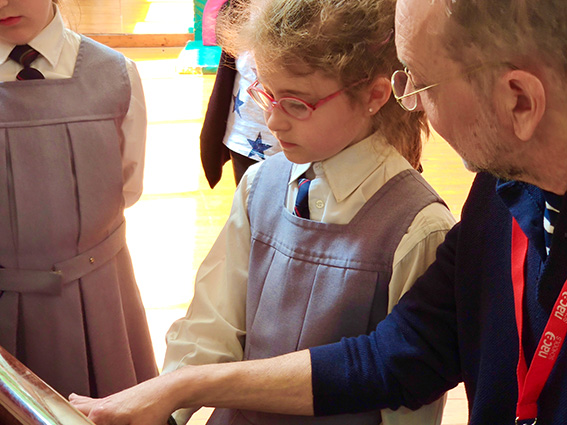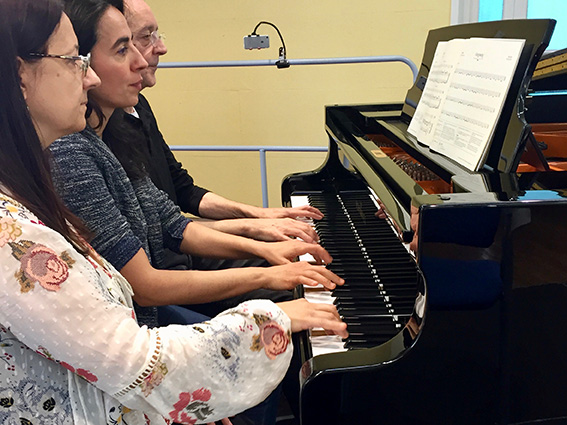Method characteristics
These books are strategically developed so that the apprentice learns the basic rudiments of musical language, while technical difficulties are being solved gently, rigorously, and gradually, empathy is developed by making music with 4 or 6 hands.
Play with people who are starting from scratch
Open piece Number 1 from Volume 1 and explain to the beginner what he will need in order to understand and follow the score, using the tutorial and glossary. You will soon be able to fit in the piece, playing with it between the two of you. Look for the most appropriate sound and atmosphere, perhaps thinking of an image or a scene for which the music would serve as background as you try to create that atmosphere. Begin to improvise and embellish (especially in the repetition and at the ending). That is, make music.

For any age
While these pieces are quite appropriate for teaching beginning children, they are also useful for adolescents and adults – that is, they are not specifically focused on any age group. Even people from different generations can play together, with everyone having fun.
Overcoming one’s fear of musical scores
Students begin by reading very simple pieces, which will progressively include more musical notation concepts. One learns effortlessly while playing pieces containing more and more elements. Meanwhile, the music will be increasingly interesting.

¡Games! For 2, 3 or 4 players at different levels
These games are pieces that offer beginners the possibility of approaching the reality of the music together and live, all within a festive and playful atmosphere. Anyone who wants to can take part in these activities. All of these “game pieces” include certain obligatory accompaniment voices, but the other parts can be duplicated by other players in different octaves, with invented or improvised ornamentation. Turns can also be organised, with some players relieving others – although those who maintain the base part repeat a number of measures, without stopping the music.
The piano is at the centre of all these games, since it can be played by from 2 to 5 pianists at the same time, with different players moving in and out. These pieces can also be accompanied by small percussion instruments, hand clapping, voices or by string or wind instruments playing one of the written voices. Or participants can create their own solos. A large group can be put together to play these pieces, all of whom can participate at the same time: learners at all levels, amateurs and professionals. This can also be done with other pieces in the book, although they are not labeled as games.
Making music is therapeutic
Even for people with different disabilities, who will be able to play the pieces more easily, given that those pieces do not require a high level of physical ability. This can be helpful for their integration into a group. Moreover, disabled beginners will enjoy playing the scores at a physical, as well as mental and intellectual level.

Learning to play with others
A wonderful aspect of the piano is that it can be played both solo or in a group. Playing with someone from the start can be quite useful, since it helps the student get used to playing and listening at the same time. Simply playing the piano becomes an activity that develops the student’s communication, cooperation and social skills. This is as important for his musical education as it is for the student’s education in general.
